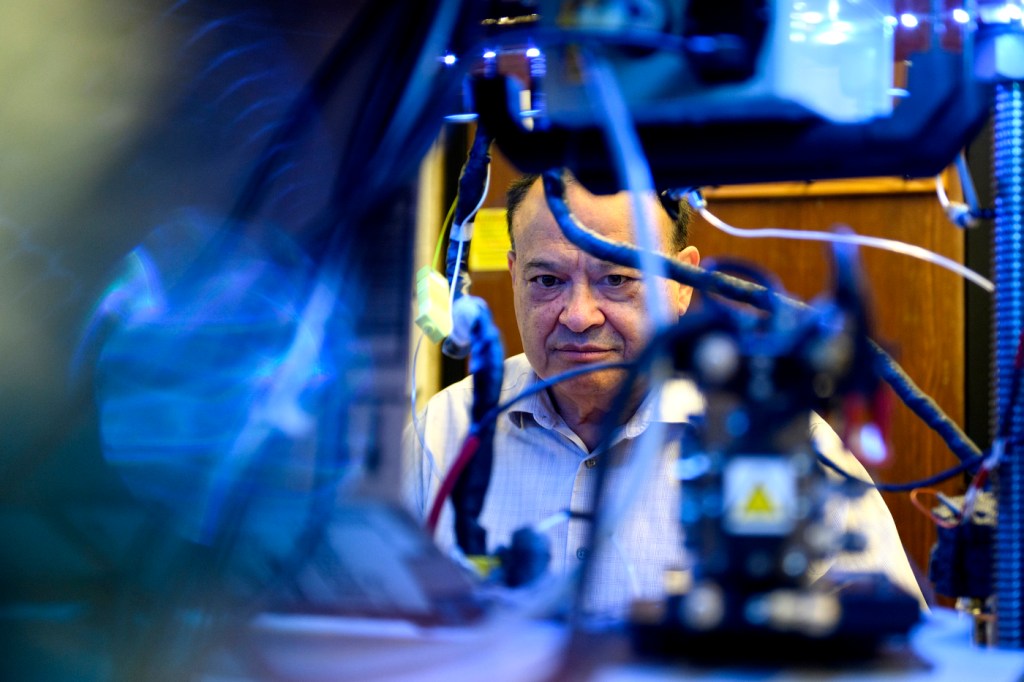Northeastern researcher helps convert astronauts’ wastewater into alternative fuel for use in outer space

Researchers have successfully figured out how to extract energy from wastewater in outer space. The findings will give astronauts an alternative fuel source to power future trips to the moon, Mars or beyond.
The goal of the research paper, “Autonomous Electrochemical System for Ammonia Oxidation Reaction Measurements at the International Space Stations,” was to create an autonomous electrochemical device that converts ammonia into energy at the International Space Station. The research was the first electrochemical experiment ever done on the space station.
At the beginning of February, npj Microgravity announced it would publish the peer-reviewed paper.
The research was a partnership with NuVant Systems, an A3 Global Company, NASA, Northeastern University and the University of Texas at El Paso. NASA funded the project.
“We wanted to see if waste can be used as fuel in space travel,” says Eugene Smotkin, a Northeastern chemistry and biology professor and one of the leading researchers on the project.
Ammonia is a molecule used as fertilizer, refrigerant and fuel. Ammonia is generated in the wastewater process and is a high-energy fuel.
It is possible to convert ammonia to nitrogen and electrical energy through the ammonia oxidation reaction or AOR. The reaction requires a catalyst to decrease the energy barrier that prevents the molecule from reacting and transforming into nitrogen.
The AOR system was taken to the International Space Station using an autonomous system consisting of electrode arrays, fluid pumps and a circuit board. The catalyst was on screen-printed carbon electrodes.
Oxidation is the same as stripping electrons. So a good fuel yields electrons—which oxidized ammonia produces. The result is fuel cells for batteries.
The self-run device brought to space was small—only 4 inches, by 4 inches, by 8 inches—and was connected to a power rack.

The biggest challenge the researchers needed to overcome was zero gravity. In space, liquids float together in blobs that can fly away, which is a problem when the starting product is ammonia in water. Instead, the device used enclosed chambers to catalyze the ammonia by absorbing it into platinum nanocubes.
In space, batteries and solar energy are the primary sources of fuel. However, the further one gets away from the solar system, the harder it becomes to rely on energy from the sun. Creating energy from waste furthers the use of mass brought onto the space vehicle.
Finding ways to use every ounce of mass in space is critical, Smotkin says.
“It’s a little more acutely needed in our space because anytime you can convert a waste material into something of value—you win big.”
On land, there are choices about what to do with waste material. It’s not a big deal if it is lost. But, when you lose material in outer space, something is going wrong, he says. It’s not a cyclical system.
An analogy Smotkin noted was the life of a car battery, which uses a similar process. The battery is built and used in a car until it dies—a “cradle-to-grave life cycle.” However, Smotkin works to take the used batteries and refurbishes them to put them back in vehicles, extending their life.
Food, he says, is similar. A person who eats the food, digests it, and converts it into energy. There is a byproduct at the end that the body voids. But, Smotkin asks, can you extend its cradle-to-grave cycle?
“You do it in the space program because you must do it,” he says. “Because you’re isolated, and you’re out there in the space station, and you have a choice—you can eject it or extract usefulness from it. Clearly, the latter is better.”
Finding fuel in waste products in outer space can eventually apply to the work happening here on Earth.
“We have an energy shortage right now,” Smotkin says. “We don’t have the ability to store energy. And fuel is not readily available to all 8 billion people here. Many people have no electricity, so we must find low-cost sources. And these can contribute to that.”
Beth Treffeisen is a Northeastern Global News reporter. Email her at b.treffeisen@northeastern.edu. Follow her on Twitter @beth_treffeisen.





